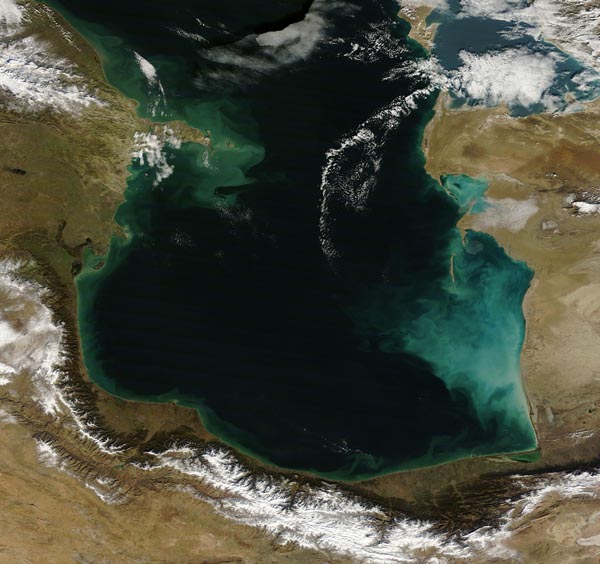Topography matters as well as total quantity of water. Earth's oceans are deep, over 12,000 ft. / 3.5 km on average. A planet with significantly flatter topography (less elevation range) might have as much or more surface water coverage with significantly less volume/mass of water - mostly shallow seas instead of deep abyssal oceans.
However, if we're assuming a planet similar to Earth except for less water:
Generally harsher climate. This is the 'continental' climate referred to in the quote in the question -- colder winters, hotter summers. That's why sea-moderated Scotland is relatively mild while inland Moscow, at almost exactly the same latitude, has much more extreme temperature variations, and farther east parts of Russia even more so. Similarly, the Aleutian Islands of Alaska are cold and wet, but don't reach anything like the extreme winter cold of inland Fairbanks, Alaska (though they are cooler in summer).
This sort of climate would dominate over most of the planet. Subtropical areas might be outright unlivable in summer; subarctic areas would tend to be like our Siberia or worse.
How exactly it turned out would depend on the planet's average temperature, which has varied significantly over Earth's history of complex life on land (the last 400 million years or so). A drier world would also affect the average temperature - ocean and forest are dark and absorb sunlight well, while deserts tend to be pale (reflective), so this would mean more sunlight reflected away and a cooler world overall.
https://nsidc.org/cryosphere/seaice/processes/albedo.html
https://en.wikipedia.org/wiki/Albedo#Terrestrial_albedo
On the other hand, a mostly-desert planet would probably remove volcanic CO2 from the atmosphere less effectively, warming it overall.
This world would also probably have less clouds (less water surface to evaporate water from), but clouds are complicated, with both cooling and warming effects on the overall climate.
https://isccp.giss.nasa.gov/role.html
So it's not intuitively clear whether this world would be cooler or warmer than current-day Earth on average, but it would certainly have more severe extremes (assuming all else is equal, again - for example less axial tilt would decrease seasonality).
Flora and fauna: Well, given the climate, there would probably be less overall diversity than Earth has - rich, moist environments like rainforests and tallgrass prairie are going to be rare & limited (though they might well exist - coastal areas and islands could still be locally moist and moderated). It's very unlikely you'd get anything like our Amazon Basin or the eastern Great Plains, though. There's probably going to be a lot of hot desert, semi-desert, and steppe / dry grassland in the low-and mid-latitudes, and Siberia-type taiga and cold desert in the higher latitudes.
Given less water availability, there would be less biological productivity too, assuming the plants here are about as efficient at using water as Earth's.
Human life would probably be concentrated in the relatively small moderated coastal/island areas, where agriculture would be workable. Outside that, people would probably be limited to hunting-gathering or at best low-population-density nomadic herding of hardy livestock, and the harsher desert areas might not be survivable at all.



